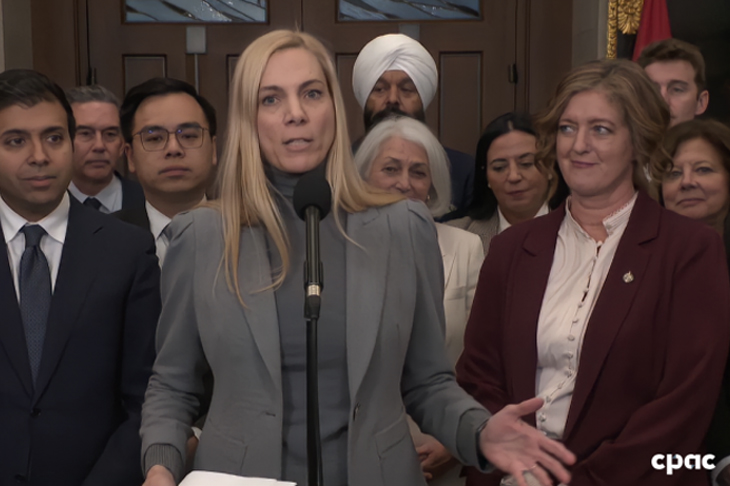OTTAWA – Two acts and three regulators overseeing the Canadian communications world just don’t make sense any more, according to the chairman of the CRTC.
With the differences between what’s a cable operator and what’s a telco nearly gone, from a services provided perspective, and the trend towards distributor-content owner consolidation continuing, maintaining the legislative differences between the various communications companies in Canada no longer makes any sense, says CRTC chairman Konrad von Finckenstein.
“The current piecemeal approach is outdated and no longer up to the task,’ the chairman said Friday during the Law Society of Upper Canada’s biennial conference on communications law and policy, held at the National Arts Centre in Ottawa. It’s a theme he has repeatedly spoken on since becoming CRTC chairman.
“It no longer makes sense to apply different rules to a converged company’s telecom and broadcasting activities. It makes even less sense to have a different body responsible for spectrum and wireless communications,” he continued. “We need to break down these legislative distinctions, which are becoming increasingly artificial, and develop a comprehensive approach to communications.”
Von Finckenstein was disagreeing with conference organizer Peter Grant of McCarthy Tetrault, one of the country’s foremost communications lawyers, who said the time and resources required to make these changes “just isn’t worth the effort.”
Legislative change isn’t the only push von Finckenstein is making in Ottawa-Gatineau. The day prior to the legal conference, he told an Industry Canada Spectrum Roundtable panel Thursday that it’s time the CRTC take over the administration of that resource.
Spectrum responsibilities (other than that of the military) rest with Industry Canada and the CRTC. Telecom, television, radio and cable companies all have to deal with both for spectrum issues, and that’s quite inefficient, especially as the bigger companies offer many of these products and services, said von Finckenstein.
“We now have fully integrated companies offering telephone, wireless, broadcasting and Internet services. It no longer makes sense to have a single regulator for wireline service providers, but two different civil regulators for wireless service providers. More to the point, the lack of regulatory coherence is an obstacle to innovation and competition, and makes it difficult to maximize economic and social benefits for Canadians,” he said.
While the Commission decides on who can get a TV or radio license and conducts foreign ownership reviews under the Broadcasting Act and Telecom Act, those companies must then also deal with Industry Canada separately to get their spectrum certificate and sometimes again under its different foreign ownership review.
(Ed note: Which led to the Globalive fiasco where Industry said its ownership was fine, the CRTC said it wasn’t, and Cabinet had to intervene in order for Globalive’s Wind to launch.)
Industry Canada also sets spectrum policy, auctions or assigns the spectrum, co-ordinates with other countries and international bodies, does field testing, sets technical standards, and does some dispute resolution.
But having two bodies dealing with the same thing creates uncertainty and delay – and increases costs – said the CRTC chairman.
“In theory, Industry Canada must first issue a broadcasting certificate and broadcasters must then come to the Commission for their licences. In practice, the two processes occur at the same time. The CRTC sometimes has to approve an application on the condition that the broadcaster receives a certificate from Industry Canada, which creates confusion and hold-ups,” he said.
“Regarding the second issue, Industry Canada is required by the Radiocommunication Act to conduct ownership reviews for the purpose of assigning spectrum. The CRTC applies the same test, but under the Telecommunications Act and in the context of a company seeking to operate as a telecommunications carrier.
“Having two decision-makers can result in contradictory decisions, or at the very least setbacks for the industry. That was the case with Globalive and, earlier, in the merger of Telesat Canada and Loral Skynet. In addition, Canada has not rolled out spectrum as quickly as other countries because of this dual authority.”
So what to do?
Von Finckenstein invoked the 2006 Telecommunications Policy Review Panel report (which the Conservative government has shown in the past it’s a big fan of. See: Bernier, Maxime), which suggested that spectrum regulation and management be given to the CRTC. In the States and in the U.K., the Federal Communications Commission and OFCOM, respectively, have been given those powers, as has Australia’s communications commission.
Such a reallocation of powers, said von Finckenstein, would let the government focus on policy issues while the Commission looks after the day to day nuts and bolts of spectrum management – and it also takes away any suggestion of political influence over licensing.
“It certainly does make sense to group the functions that belong together under one regulatory body, such as those related to the use of spectrum for broadcasting and telecommunications. A single regulator for wireline services and spectrum would result in a more stable, unified and market-based approach. The industry would be able to attract more foreign investment to Canada knowing that it can count on regulatory certainty,” said the chair.
In short, an independent regulator like the CRTC could: conduct licensing activities in a more open and transparent manner, provide a single approval process for foreign-ownership reviews, intervene only where there is a lack of competition or a market failure, avoid duplication, overlap and inconsistencies, and reduce administrative costs.”
Overall, three responsibilities would shift to the CRTC under von Finckenstein’s proposal: the assignment of spectrum for broadcasting and telecom, including the conduct of auctions; the resolution of disputes involving roaming, tower and site sharing; and foreign-ownership reviews.
All else, especially policy and international relations, would stay with Industry while Cabinet would continue to have the power to direct the CRTC to do certain things (like set spectrum aside for new entrants, as the Ministry did for the last spectrum auction) and send any Commission decision it doesn’t like for reconsideration.
Chairman von Finckenstein acknowledges, too, that such a shift would not be easy (and may be all but impossible, given where the priorities of a minority government lie, and Industry Minister Clement’s comments to us here), but in order to keep up to the rest of the world, a world in which spectrum is so important, we have to be far more efficient in Ottawa-Gatineau.
“(W)e cannot put Canada at the forefront of the converged world without first getting our house in order. We believe that institutional cohesion is the key that will allow us to achieve this objective,” he said.
“Other countries have realized this. They have already gone ahead and restructured their spectrum-management responsibilities. The longer we delay, the farther behind the curve we will find ourselves.”








